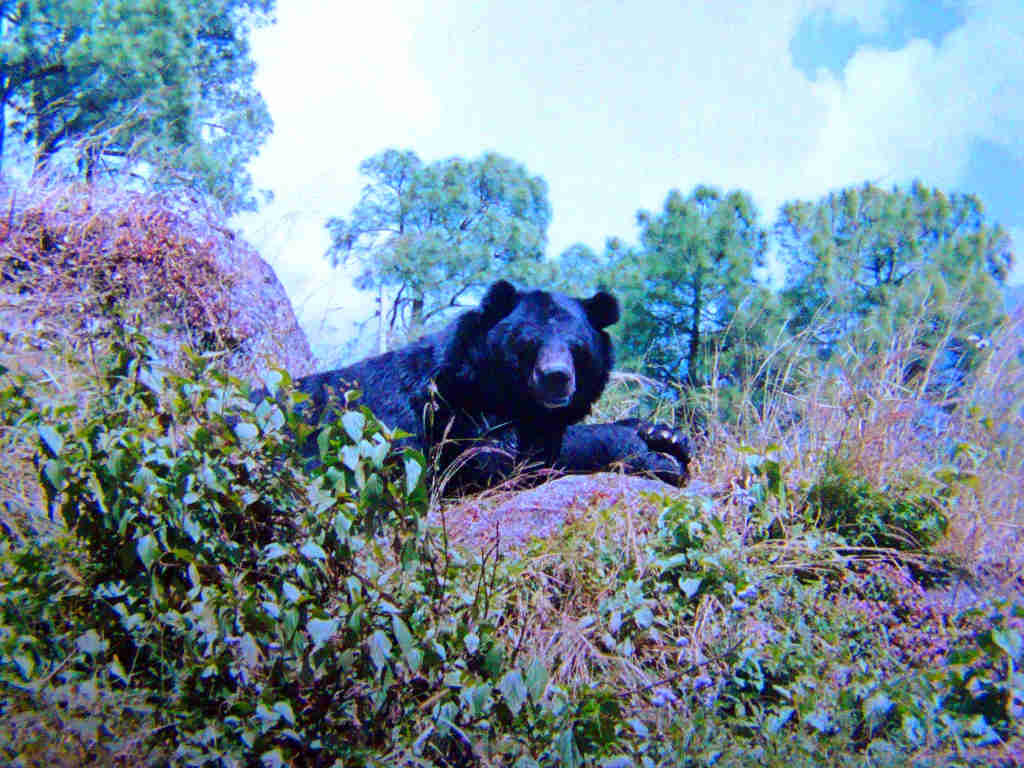
Ursus thibetanus (Himalayan black bear)
| Common name | Himalayan Black Bear |
| Latin name | Ursus thibetanus |
| Local name | Reechh, |
| IUCN/WPA/Indian status | Vulnerable/ I/ Uncommon |
| Social unit | Solitary, or utp to four bears when mother is with cubs |
| Size / weight | HBL: 110- 190 cm, TL: 7.5 – 10 cm, Wt. 60-250 Kg (male) 35-170 Kg (Female) |
| Description | A large forest-dwelling bear of the Himalayas, also called Asiatic black bear or Moon bear due to the crescent-shaped creamy or white mark on its glossy black chest. Its black fur is much shorter than that of the other black bear of India, the Sloth bear, it muzzle is shorter and tan-brown, the brown colour stopping short below the eyes and its chest marking is crescent shaped instead of V shaped and extends all the way to its armpits. The chin is white. Longer hairs are present in the neck region, probably an evolutionary adaptation to escape the bites of predators such as tigers. It has powder-puff ears that are very noticeable and a very short tail. The feet are large with black pads and form the largest tracks among Indian bears. The claws on its digits are pronouncedly curved and dark black in colour, longer on the forefoot than the hind foot but shorter than those of the Brown and Sloth bears. |
| Behavior | Arboreal, ascending trees to feed on fruits or honey or escape intrusion though it does not sleep on trees like the Sun Bear. |
| Distribution | Throughout Himalayas from Jammu & Kashmir to Arunachal Pradesh and in hilly regions of other north- eastern states. |
| Habitat | The species prefers heavily forested broadleaved and coniferous forestas as habitat. It uses orchards, agricultural fields and human habitation to move between forest patches. |



